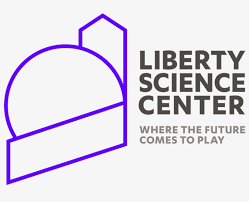Museums began as private collections of artifacts and objects with the highminded goal of cultural preservation. Historians attribute the world’s first museum to the 6th-century-B.C. Babylonian princess Ennigaldi who collected, curated, and displayed numerous Mesopotamian artifacts spanning a period of 1,500 years. In the 16th century, European nobility took pride in creating “cabinets of curiosity,” (Kunstkammer) or “wonder rooms,” private and often quirky collections of important art objects, eclectic artifacts, religious relics, and specimens from the natural world. In 1683, the first public museum opened at Oxford University. The public science museums of the 18th and 19th centuries were encyclopedic collections of scientific curiosities (rocks, fossils, preserved plants and animals). In 1903, the Deutsches Museum in Munich was the first science museum to move beyond static collections and offer interactive exhibits. Visitors to the Deutsches Museum were encouraged to push buttons, pull levers, and immerse themselves in hands-on “laboratory” activities that brought out the wonder and explanatory power of science. The modern interactive science center was born (note: the word “museum” was replaced with the dynamic “center”), and Liberty Science Center, which opened in 1993, is part of this interactive, hands-on tradition.
The pace of scientific discovery today is exponentially faster than it was in the early 20th century. Science centers in the 21st century, unless they are constantly reimagining their exhibition halls—which is a prohibitively expensive proposition—risk becoming stale repositories of yesterday’s science and not amazing displays of the science of today and tomorrow. My team and I have been reimagining Liberty Science Center as an “awesomeness factory” (those were the words of an enthusiastic eight-year-old in our elevator), as a showcase for exciting new scientific discoveries and awe-inspiring technologies that will soon be in our lives. We’ve already created the largest and most technologically advanced planetarium in the Western Hemisphere, in which we feature the latest breakthroughs in astronomy and space science. Now we are adding an increasing number of pop-up demonstrations of new technologies, from personal flying machines to autonomous robots.
But the best is yet to come. LSC wants to do more than showcase the science and technology of others. We want to actively foster game-changing scientific and technological discovery. Thanks to a donation of 12.5 acres of land from Jersey City, we are building a 30-acre campus called SciTech Scity to launch dozens of science and technology companies and reimagine K-12 science education. See you at the opening in late 2022!















